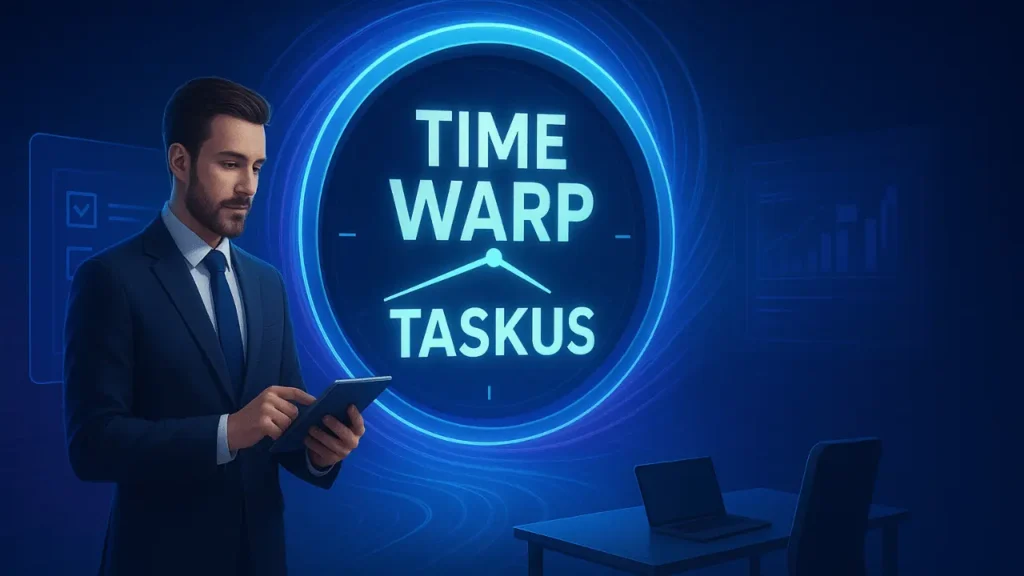Ever wished you had a time machine to get more done in less time? That’s exactly what the concept of time warp taskus feels like. It’s not about bending physics but about bending your workflow—so tasks that normally drain hours get completed in a fraction of the time.
In this guide, we’ll break down what time warp taskus means, how you can apply it in real life, and why it’s quickly becoming a go-to productivity framework for professionals, students, and businesses.
What is Time Warp Taskus?
At its core, time warp taskus is a productivity mindset that helps you reframe time. Instead of chasing deadlines, you create systems that warp your perception of tasks—making them feel lighter, faster, and more achievable.
It’s like tricking your brain into becoming hyper-efficient. For example, you can:
- Break tasks into smaller, manageable chunks
- Use gamification techniques to maintain focus
- Set artificial deadlines to create a sense of urgency
Think of it as time management 2.0, where instead of controlling the clock, you control your approach.
The Psychology Behind Time Management
Humans often miscalculate how long tasks take. Psychologists call this the Planning Fallacy. The time warp taskus method leverages psychology by:
- Creating urgency → tricks the brain into laser focus.
- Removing decision fatigue → tasks are pre-structured.
- Reward loops → small wins keep motivation high.
Pro Tip Box:
When you feel stuck, reframe your task as a “10-minute sprint.” This warp in perception can kickstart momentum.
How Time Warp Taskus Wor
Key Principles of Time Warp Taskus
- Chunking: Break tasks into smaller, timed blocks.
- Artificial urgency: Use countdown timers to mimic deadlines.
- Focus triggers: Set cues (music, environment, apps) that signal “work mode.”
- Reward system: Associate task completion with small, instant rewards.
Tools & Techniques
- Pomodoro apps (25-min sprints)
- Time-tracking software (Toggl, RescueTime)
- AI task managers for automating repetitive work
- Kanban boards for visual task progress
Benefits of Applying Time Warp Taskus
Here are the biggest advantages:
- Finish tasks faster without burnout
- Reduce procrastination by gamifying work
- Improve focus and creativity
- Build consistent habits
- Feel “ahead of time” instead of constantly chasing it
Real-World Use Cases
For Students:
- Studying for exams using 20-min hyperfocus sprints.
- Writing essays with artificial 1-hour deadlines.
For Professionals:
- Completing reports before meetings.
- Automating repetitive emails through task management tools.
For Entrepreneurs:
- Prioritizing high-ROI activities.
- Using time warp taskus to shift between creative and analytical tasks.
📌 Example:
A freelancer might spend 2 hours writing a client article. With time warp taskus, they break it into:
- 15-min research
- 30-min draft
- 15-min edits
- 15-min formatting
This creates speed, structure, and less overwhelm.
Step-by-Step Guide to Implementing Time Warp Taskus
- Identify your biggest time drainers.
- Break them into smaller blocks.
- Assign artificial mini-deadlines.
- Use timers and reminders.
- Reward progress.
⚡ Quick Tip: Start with just one project using time warp taskus. Once you master it, apply it across your work and personal life.
Common Mistakes to Avoid
- Over-scheduling tasks (leads to stress).
- Ignoring breaks (causes burnout).
- Using too many apps (creates distraction).
- Being rigid instead of adaptable.
Comparison: Time Warp Taskus vs. Traditional Productivity Hacks
| Feature | Time Warp Taskus | Traditional Productivity Hacks |
|---|---|---|
| Focus | Task perception & psychology | Time blocking only |
| Speed | Feels faster due to urgency | Normal pace |
| Motivation | Gamified with rewards | Willpower-based |
| Flexibility | Adapts to flow | Often rigid |
Suggested Infographics & Visuals
- Infographic Idea: “The Time Warp Taskus Cycle” – showing steps (chunk → urgency → focus → reward).
- Flowchart: Traditional task completion vs. time warp taskus method.
- Comparison Graphic: Benefits of time warp taskus vs. procrastination.
- Checklist Visual: “5 Steps to Apply Time Warp Taskus Today.”
FAQs on Time Warp Taskus
Q1: What is the main idea behind time warp taskus?
It’s a productivity framework that shifts how you perceive and manage time, making tasks feel quicker and less overwhelming.
Q2: Can time warp taskus be used for team projects?
Yes. Teams can set mini-deadlines, assign micro-tasks, and track progress visually for efficiency.
Q3: Is time warp taskus only for work?
Not at all. You can use it for studying, fitness, personal goals, or even managing household chores.
Q4: How is time warp taskus different from Pomodoro?
Pomodoro is timer-based. Time warp taskus combines timers, psychology, and gamification for a broader impact.
Q5: Does it really save time?
Yes, because it reduces procrastination and mental resistance, which are the real time-wasters.
Conclusion
The future of productivity isn’t about working harder—it’s about working smarter. With time warp taskus, you bend your workflow to your advantage, making tasks feel lighter, faster, and more engaging.
Start small: pick one task today and apply the time warp taskus method. You’ll be amazed at how much more you can achieve when time feels like it’s on your side.
Call-to-Action:
Try using time warp taskus this week and share your experience with colleagues or friends. You’ll not only finish tasks faster but also inspire others to warp their time for success.
